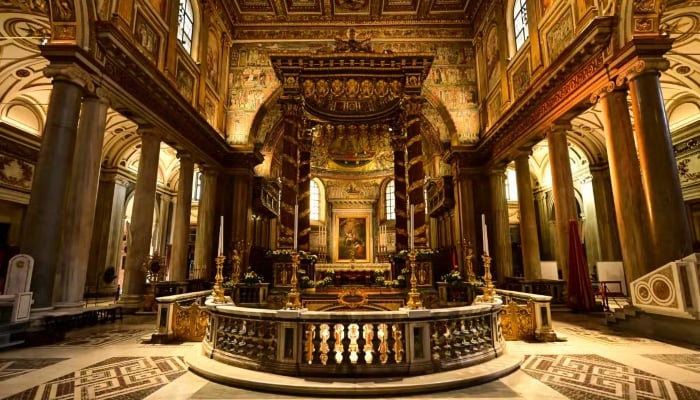The Santa Maria Maggiore basilica, chosen by Pope Francis as his final resting place, is a fifth-century church situated in the heart of Rome that already houses the tombs of seven other popes.
Francis, who passed away on Monday at the age of 88, is the first pontiff in over a century to be entombed outside St Peter’s Basilica in the Vatican.
Pope Francis held a deep devotion to the worship of the Virgin Mary and consistently made it a point to pray in Santa Maria Maggiore before departing on international trips and upon his return to Rome.
Most recently, Francis prayed before the icon of the Virgin Mary within the basilica on April 12th, marking the commencement of Holy Week, which culminated in Easter.
Francis declared his wish to be entombed in the basilica — also known as the Basilica of Saint Mary Major — in 2023.
The last pope to be interred there was Clement IX in 1669.
The most recent pontiff to be buried outside the Vatican was Leo XIII in 1903, whose final resting place is the Church of Saint John Lateran, the Cathedral of the bishop of Rome.
As one of Rome’s four papal basilicas, Santa Maria Maggiore contains the remains of several other notable figures, including the architect and sculptor Gian Lorenzo Bernini, who designed St Peter’s Square and its surrounding colonnades.
The interior of Santa Maria Maggiore has largely retained its original form. The central nave is lined with 40 Ionic columns and features exquisite mosaics.
One legend connects the basilica’s origins to the Virgin Mary. It recounts the story of a wealthy, childless Roman couple who desired to donate their possessions to her.
She appeared to them in a vision, instructing them to build a church in her honour at a site where a miracle would occur. That summer night in August of 352 AD, snow fell on the Esquiline Hill, where the basilica now stands.
Another legend attributes the dream of the summer snowfall to Pope Liberius.
However, according to the Vatican, nothing remains of that original church. Construction of the current basilica began around 432 AD under Pope Sixtus III.
The basilica houses some of the Church’s most significant relics, including an icon of the Virgin Mary holding the baby Jesus, attributed to Saint Luke.
It also contains pieces of wood believed to be from Jesus’s crib. The basilica’s website notes that recent studies have dated the wood to the period of Jesus’s birth.



